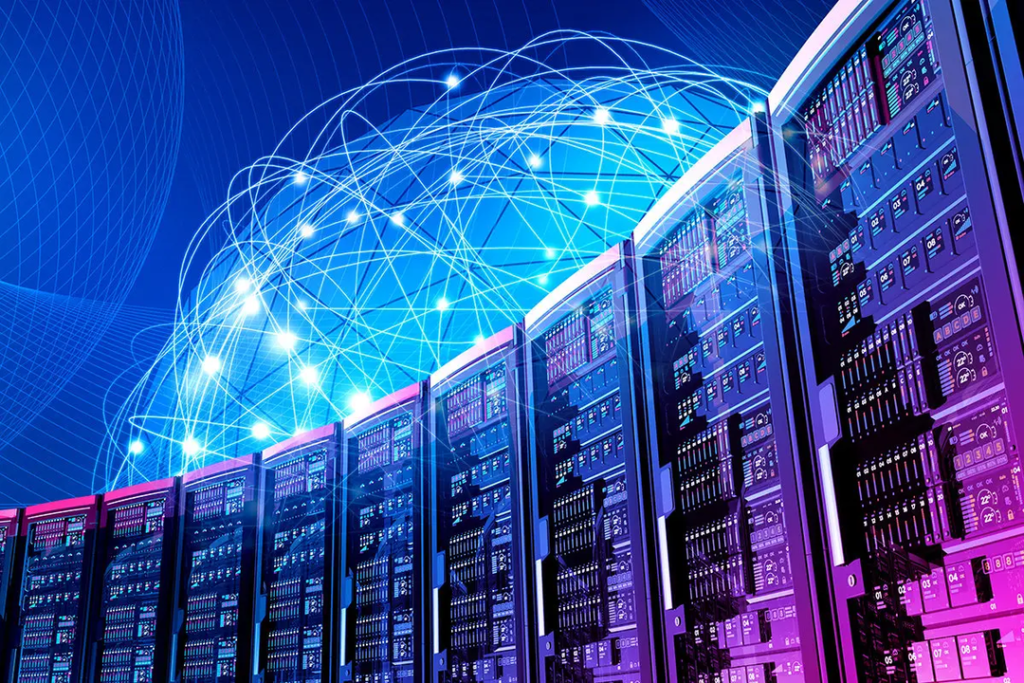
High-Performance Computing
“High-performance computing (HPC) generally refers to the aggregation of computing power in a way that provides much higher performance than can be obtained on a typical computing workstation to solve major problems in science, engineering, and business.”
Defining HPC is like defining the word “car.” Also, HPC has two meanings. It can mean “high-performance computing” or “high-performance computer.” Usually, it is evident from the context in which meaning is used.
Why high-Performance Computing Is Important
HPC enables organizations to stay ahead of the competition by processing large amounts of data faster than normal computing power, enabling faster insights. HPC solutions have the possibility of one million times the processing power of the normal computing workstations. This power allows organizations to perform large-scale analytical calculations, such as millions of scenarios using up to terabytes (TB) of data. For example, scenario planning requires HPC’s large-scale analytical computations, such as weather forecasts and risk assessments. It is also possible to design simulations before physically manufacturing a product, such as a chip or a car. In short, HPC offers superior performance and allows organizations to do more with less.
Another primary application of HPC is in medical and material advances. For example, HPC can be deployed for the below use cases :
Identify Next-Generation Materials:
Deep learning will assist scientists in identifying better batteries, more resilient building materials, and more efficient semiconductor materials.
Combat Healthcare:
Machine learning algorithms provide medical researchers with a comprehensive picture of terminal care patients at a granular level.
Researchers combine artificial intelligence (AI) techniques to reveal patterns of function, coordination, and evolution of proteins and systems.
How does High-performance computing work?
Some workloads are too large for a single computer to handle; in HPC and supercomputing environments, individual nodes (computers) work together in clusters (linked groups) to perform large numbers of calculations in a short period. These large and complex challenges are addressed in a better way using HPC solutions. The creation and deletion of these clusters are often automated in the cloud to reduce costs.
HPC can run on many different workloads, but the two most common are embarrassingly parallel workloads and tightly coupled workloads.
Embarrassingly parallel workloads
Computational problems can be partitioned into small, simple, independent tasks that can be executed simultaneously, often with little or no communication between tasks. For example, suppose a company sends 100 million credit card records to individual processor cores in a cluster of nodes. Processing a single credit card record is a small task. Still, when 100 million records are distributed across a cluster, those small tasks can be executed simultaneously (in parallel) at an enormous speed. Everyday use cases include risk simulation, modeling, contextual search, and logistical simulation.
Tightly coupled workloads
A sizeable shared workload is typically broken into smaller tasks that communicate continuously. That is, the various nodes in the cluster communicate with each other as they perform processing. Everyday use cases include computational fluid dynamics, weather modeling, materials simulation, car crash emulation, geospatial simulation, and traffic management.
HPC System Designs
HPC solutions’ power and speed advantage over standard computers is their hardware and system design viz parallel computing, cluster computing, grid and distributed computing are all part of HPC design.
Parallel Computing
Parallel computing HPC systems use hundreds of processors, each of which simultaneously executes a computational payload.
Grid and Distributed Computing
Grid and Distributed Computing HPC systems connect the processing power of multiple computers in a network. This network can be a single grid of locations or distributed over a wide area in various locations, linking network, computing, data, and instrumentation resources.
Cluster Computing
Cluster computing is a parallel HPC system consisting of a collection of computers that work together as an integrated resource using a Scheduler, compute, and storage.
Industries where high-performance computing are used
HPC is increasingly popular with Fortune 1000 companies in nearly every industry, and according to Hyperion Research, the global HPC demand is predicted to reach US$44 billion by end of 2022.
Below are the industries that use HPC and the types of workloads that HPC supports
Manufacturing:
Simulation, such as autonomous driving, assists in the design, manufacturing, and testing of new products, resulting in safer vehicles, lighter components, more efficient processes, and innovation.
Aerospace
Create complex simulations, such as airflow over an airplane’s wings.
Genomics
Perform DNA sequencing, drug interaction analysis, and protein analysis to support ancestry studies
Financial technology (Fintech)
Perform complex risk analysis, high-frequency trading, financial modeling, and fraud detection
Media and Entertainment
Create animations, render special effects for movies, transcode substantial media files, create immersive entertainment, and more
Healthcare
Research drugs, create vaccines, and develop innovative treatments for rare and common diseases.
Oil and gas
Perform spatial analysis to predict the location of oil and gas resources, validate reservoir models, and simulate fluid flow and seismic processing.
Retail
Analyze vast amounts of customer data to make more targeted product proposals and improve customer service
Where are HPC systems Implemented?
HPC can run on-premise, in the cloud, or in a hybrid model that includes some of each.
For on-premise HPC, a company or research institution builds an HPC cluster full of servers, storage solutions, and other infrastructure that is managed and upgraded over time. In the case of cloud-based HPC, a cloud service provider manages and operates the infrastructure, which the enterprise then uses on a pay-as-you-go model.
In some cases, hybrid deployments are used, especially by companies that have invested in on-premise infrastructure but want to take advantage of the cloud’s speed, flexibility, and cost savings. Such companies can use cloud services on an ad hoc basis, where some HPC workloads run continuously in the cloud, and queue times are an issue on-premise.
HPC Cloud— Essential references when picking a cloud environment
Not all cloud providers are constructed similarly. Some clouds are not developed for HPC and may not furnish optimal performance during peak periods when workloads are demanding. Here are four aspects to evaluate when choosing a cloud provider
Leading-edge performance
Cloud providers must deploy and maintain the latest generation of processors, storage, and network technology. They must also ensure they offer the same or higher capacity and top-end performance as a typical on-premise environment.
Flexibility To Lift and Shift
HPC workloads need to run in the cloud the same way they do on-premises. After migrating workloads to the cloud with Lift and Shift, the simulations you run next week must produce results consistent with what you ran ten years ago. This is critical in industries that must make year-to-year comparisons using the same data and calculations. For example, in aerodynamics, automotive, chemistry, etc., the calculation methods remain the same, so the results cannot change either.
Experience with HPC
The cloud provider should have extensive experience running HPC workloads for various clients. In addition, the cloud service should be designed to provide optimal implementation even during extreme courses, such as when operating extensive simulations or models. In many cases, bare-metal computer instances provide more consistent and powerful performance than virtual machines.
No hidden expenses
Cloud services are commonly offered on a pay-as-you-go model, so you need to understand precisely what you will be paying each time you use the service. Many users are often surprised at the cost of moving transmitted data (Egress). This is because they know they have to pay per transaction or data access request, but they often overlook the cost of Egress.
The benefits of HPC
The main benefits of HPC are :
Reduced physical testing
Using HPC to generate simulations eliminates the need for physical testing. For example, when testing for a car accident, it is much easier and less expensive to generate a simulation than to perform a crash test.
Expense
Quicker answers mean less wasted time and money. In addition, with cloud-based HPC, even small businesses and startups can afford to run HPC workloads, spend just for what they use, and scale up or down as needed.
Speed
By combining the latest CPUs, GPUs, and low-latency network fabrics such as RDMA (Remote Direct Memory Access) with all-flash local and block storage, HPC can perform massive computations in minutes not weeks or months.
Innovation
HPC drives innovation in virtually every industry as a force behind groundbreaking scientific discoveries that enrich the grade of life for people worldwide.
What is the future of HPC?
Companies and institutions across various industries are turning their attention to HPC, driving growth that is expected to continue for years to come. The global HPC market is predicted to extend from US$31 billion in 2017 to US$50 billion by 2023. As the cloud improves and further increases reliability and performance, much of the growth is expected to come from cloud-based HPC deployments, eliminating the need for companies to invest millions of dollars in data center infrastructure and associated costs.
Soon, big data and HPC will converge, with the same large computing clusters used to run big data analytics, simulations, and other HPC workloads. The convergence of these two trends will increase the computing power and capacity, leading to more groundbreaking research and innovation.
